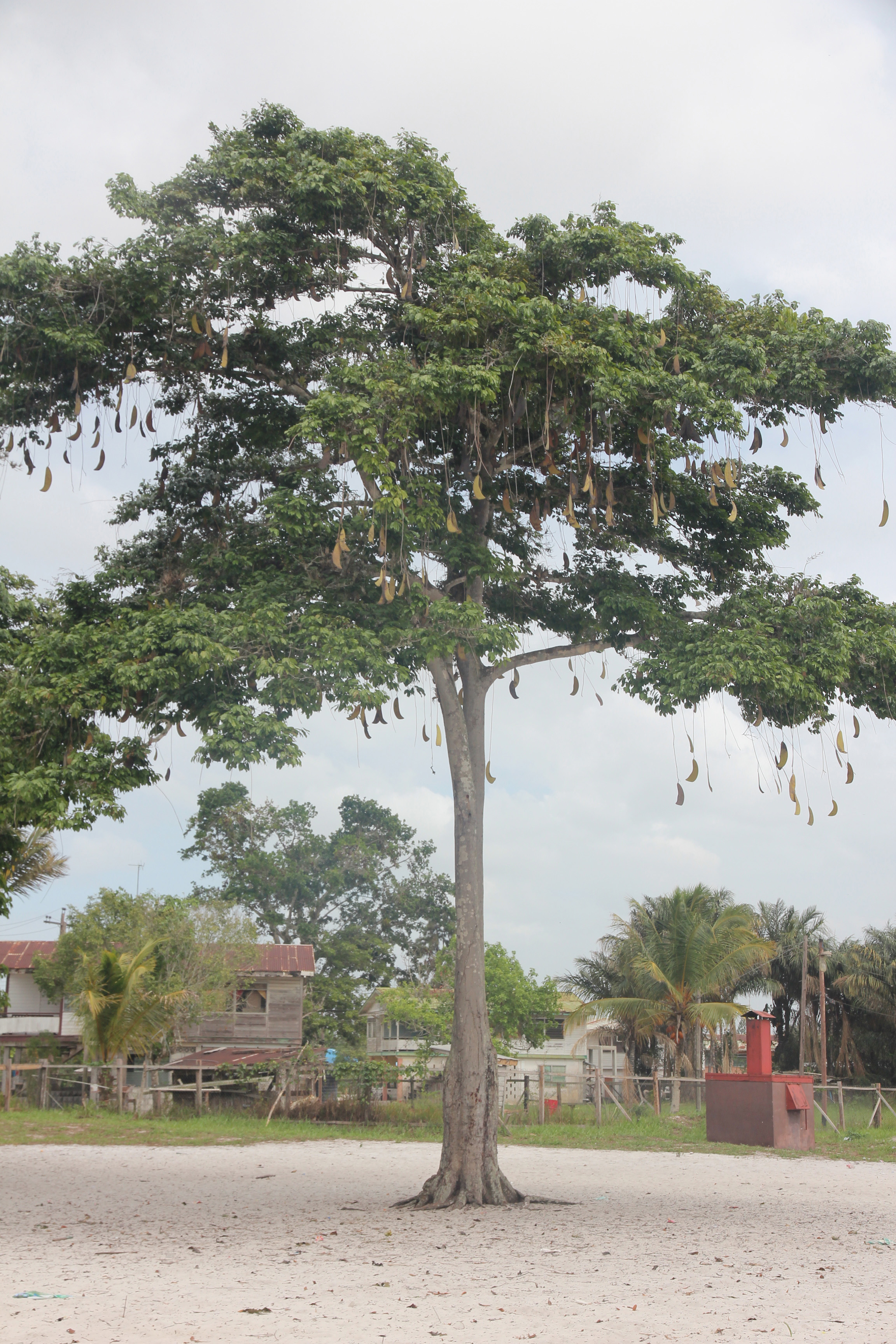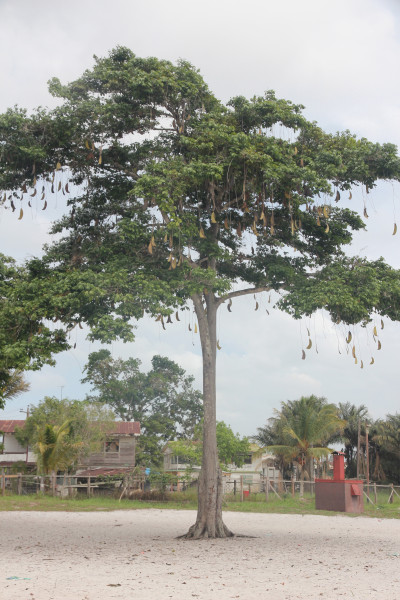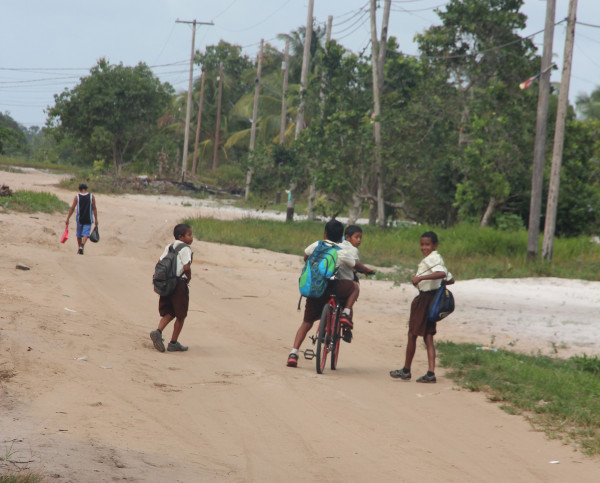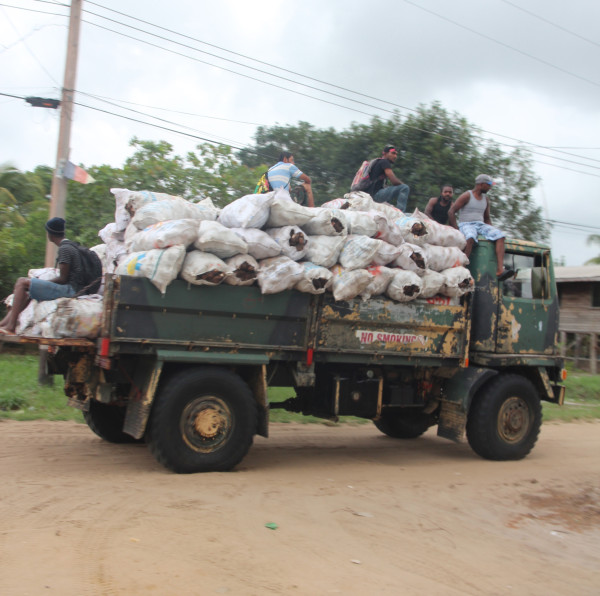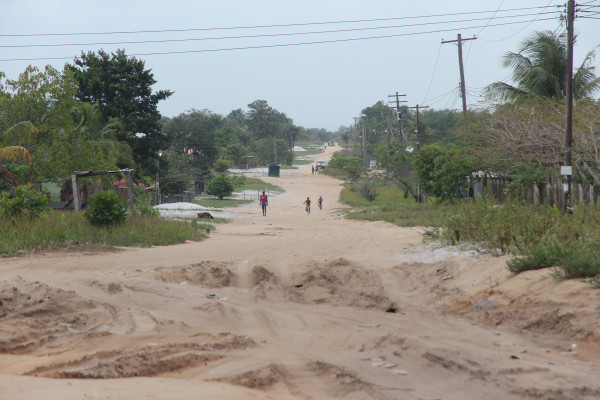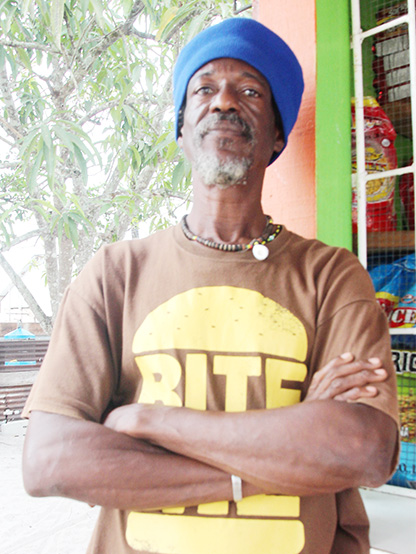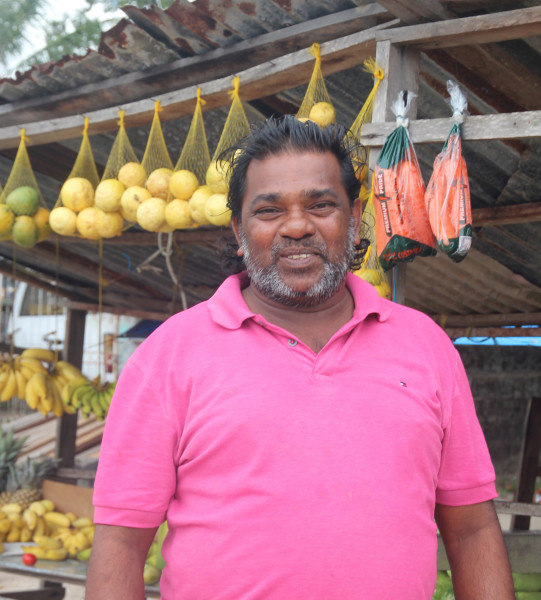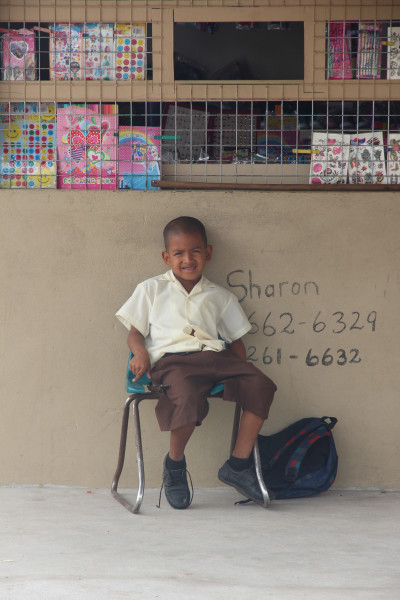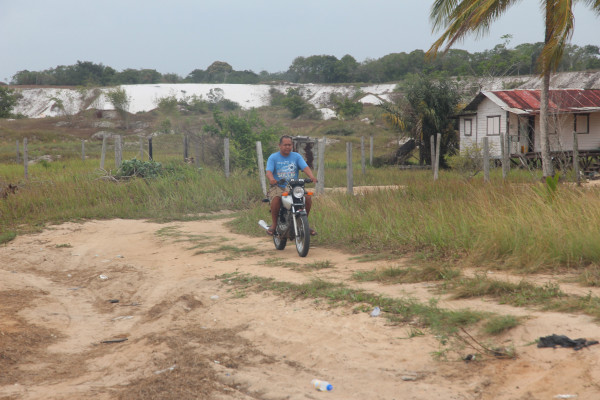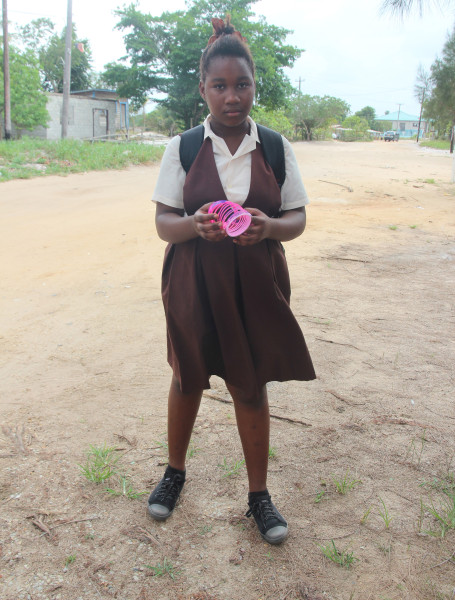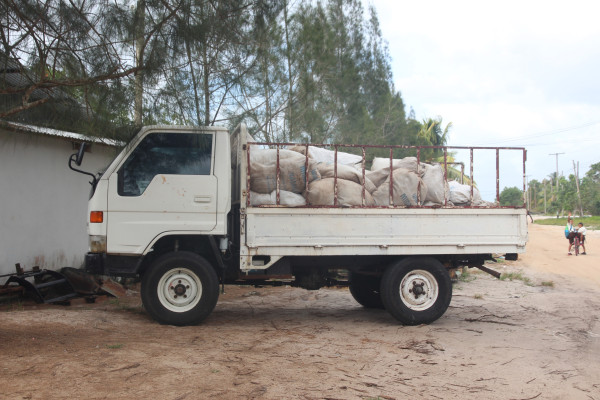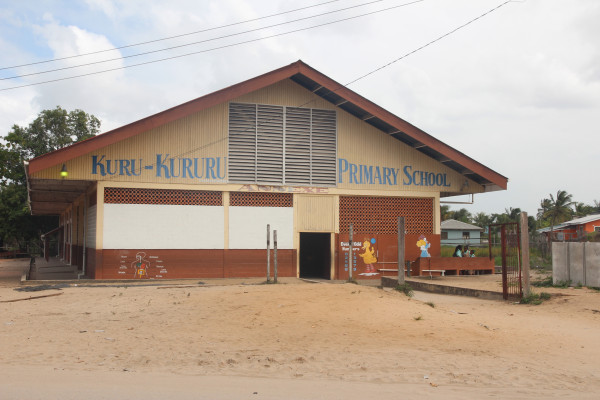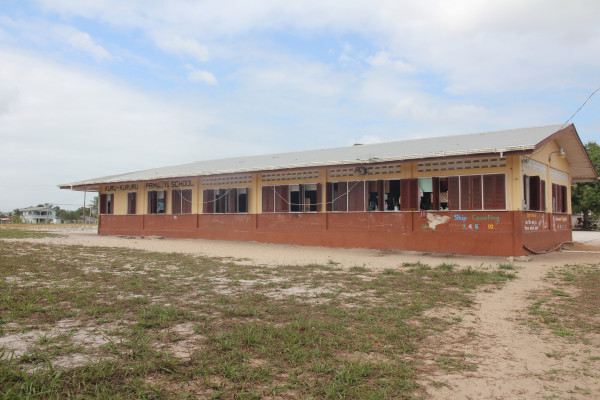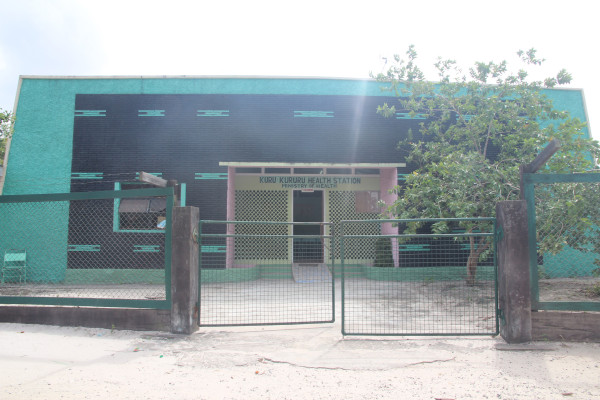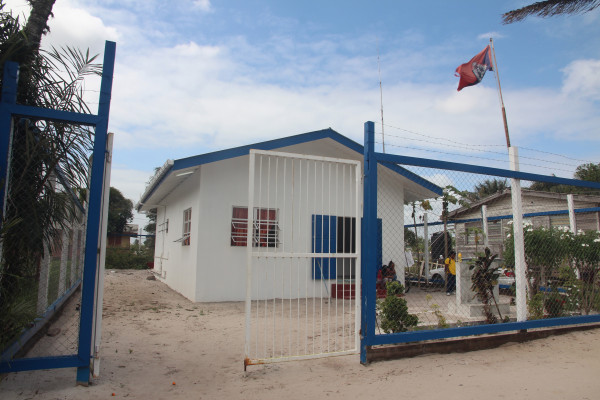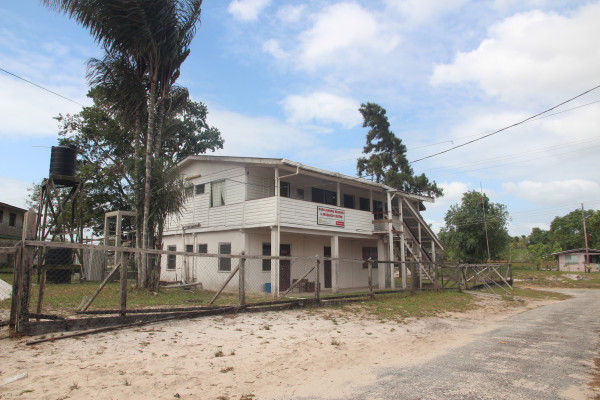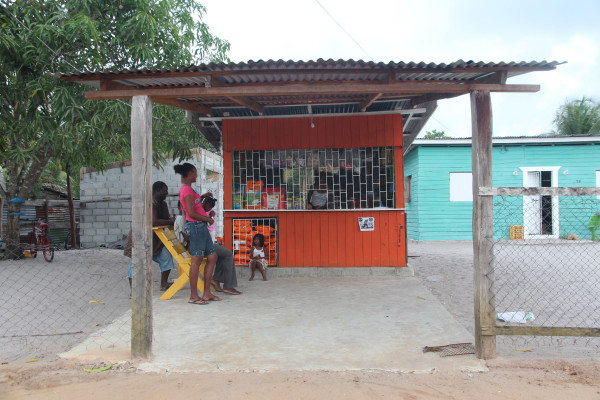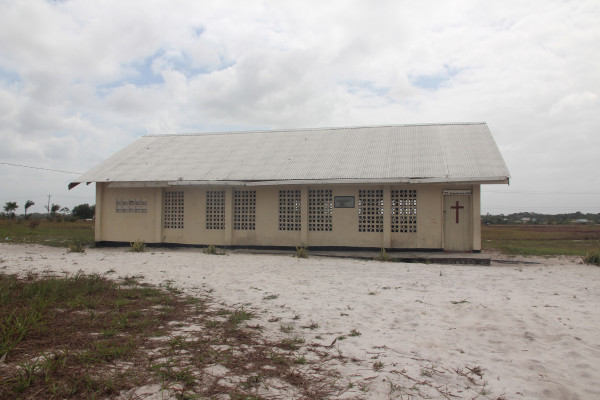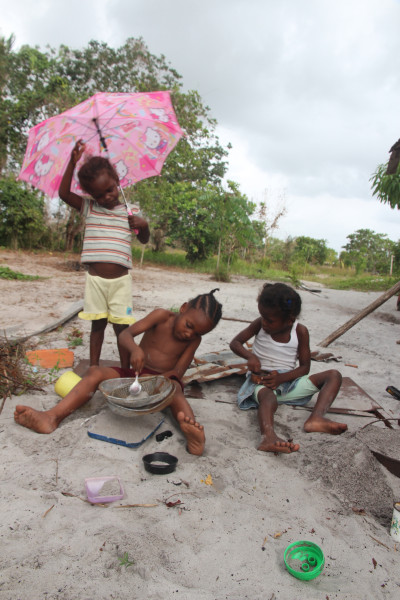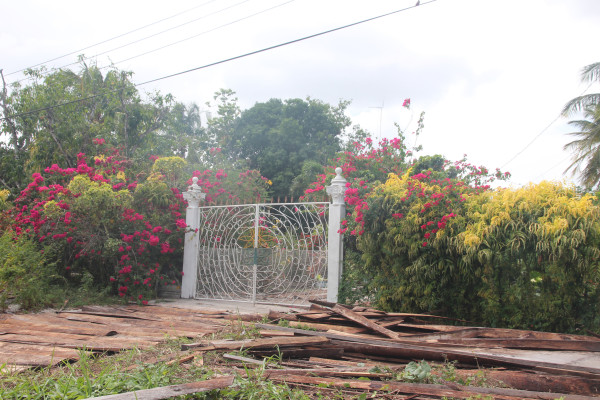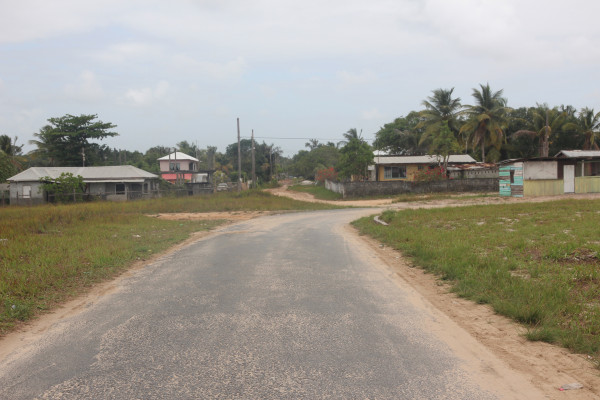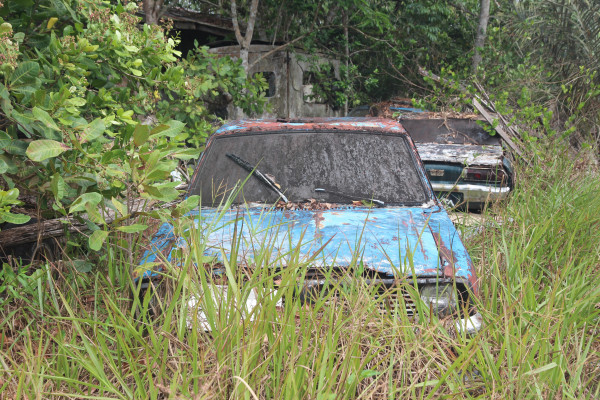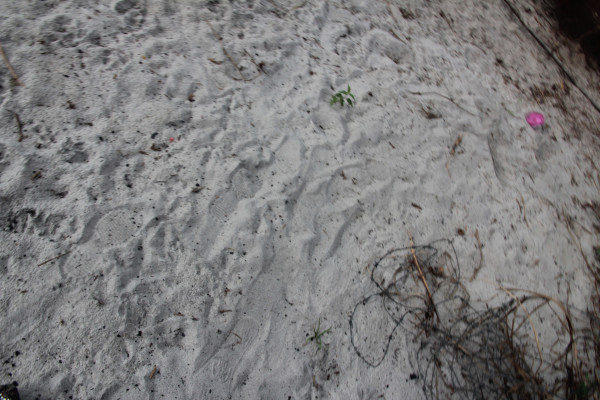Story and photos by
Joanna Dhanraj
This week’s feature on Kuru Kururu came about by way of a detour. But it turned out to a wonderful experience, even after a ‘small scare’ that was really amusing.
As we travelled along the Linden-Soesdyke Highway, I asked the driver to put me off at a certain village. Whether he knew it or not, the driver let me out at Kuru Kururu, but in my ignorance, I had no idea where I was until I started talking to folks.
Though far off the beaten track, Kuru Kururu is home to some 7,000 people, among whom, I was told, are five of the six races in Guyana excluding Europeans. The main occupation here is farming.
Kuru Kururu has two schools, a police station, churches, a market, a health centre, a Reading and Research Centre and a rundown resort, where, according to the owner, people still “come to chill out in the afternoons.” A profusion of flowers grown in pots and hanging over fences line the main road. There are some houses in clusters, while others are distant, sitting in the valley or standing high up on the hill. There are huge areas of white sand which bounce the heat of the sun right back at the unwary walker, but according to residents, it gets really cold when night steps in.
A vendor at the market, Krishna Motilall, said he moved from Mahaica to Laluni Creek with his parents when he was a boy. According to the him, his parents had moved to Laluni Creek to work with the Demerara Tobacco Company. Twenty-six years ago, after the company closed, he moved to Kuru Kururu, where he has a farm. However, most of the fruits and vegetables he sells, he buys from other farmers.
“Kuru Kururu is one of the biggest eddo producers in the world!” he boasted.
Motilall was one of the 150 vendors who were removed from La Penitence Market some time ago. Since then he has been selling at the Kuru Kururu Market instead. “It keeps us going,” he said. “I believe if farmers were allowed to sell day and night it would help the country. This village got eddo that could ship by the shipload. The price they give you for eddo can’t pay. We only get $22 wholesale for our eddo, while they sell it back in the market for $80. Thousands of limes shift from here too.”
Turning to development in Kuru Kururu, Motilall said, “For the last 26 years it’s only this tar road and light and water we got. Who ain’t farming does go all the way to town to work. So we gat nuff civil servants too.”
Kuru Kururu he said is relaxing and peaceful. “We got one and two wotless boys but that’s all.”
He said the village needs a bigger school. There are two Kuru Kururu Primary schools: one housing just primary children while the other houses both primary and secondary school children. Both are overflowing, he said.
Many years ago, there was always a doctor one could call 24/7 but today there is no doctor available after normal working hours. Motilall said it’s in the best interest of the community to have a doctor on call since the nearest hospital is miles away at Diamond on the East Bank Demerara.
Motilall will celebrate his fiftieth birth anniversary on May 25; he said he will be celebrating with Guyana since he was born the day before Guyana gained its independence.
It was after I left Motilall that the ‘small scare’ occurred. I heard a horrible sound coming from above. What it was, I couldn’t tell, but it sounded scary. I even stopped walking and looked up and around trying to figure out what it was and where it was coming from. Finally, I saw a few residents approaching by and asked what it was. They said it was the sound the wind made as it blew through the tree tops. The wind? It sounded way worse than the wind. But after standing there for a while wondering if what they had said was actually true, I was able to laugh at myself, when the sound stopped and then started again.
Walking deeper into the village, I found three children ‘cooking.’ Using discarded household items as toys, they said they were preparing “macaroni and fried rice.” Andrea Barker sat on the stairs nearby, keeping an eye on the children. She had moved to Kuru Kururu nine years ago after becoming fed-up of paying high rents in Georgetown. Barker lives with her four children and her husband.
She works on and off making coals a few villages away. She said she and a few other women do this. In the distance where many of the farms are situated, her husband plants boulanger, pumpkin and bora. Barker said she keeps to herself and is contented with life. She only sees room for one improvement: “I wish persons could unite more.”
Down one of the hills is a street where Aubrey Bailey lives. He is another migrant from Georgetown; relocating to Kuru Kururu 21 years ago.
“When I came here we had about a dozen to 20 proper houses. So from since I’ve moved here to now, there’s been a lot of development. From the time I come to now the village is still expanding; from the north, east, west and south,” Bailey said.
“The village is multi-cultured and multi-ethnic. People of all diversity live here. Kuru Kururu has very pleasant people. There’s no racialism here. I think this is one of the best communities in Guyana and I don’t think you’d find another village in Guyana that’s so multi-cultured as this one.”
For him, transportation is one of the disadvantages. Although vehicles traverse up and down the road all the time, he has a problem with the fare. It costs $300 to travel to Kuru Kururu and the fare to Timerhi is the same. According to him, the route from Georgetown to Kuru Kururu is shorter than Georgetown to Timerhi. He believes they should pay less.
Bailey, who has been doing construction for about 20 years is also an eddo farmer. “The land is fertile. Planting eddo in the swamp is a lot of work. It means cleaning the swamp out then planting. It can also be dangerous because of the reptiles [lurking] there,” he said.
A friend of his was once bitten by a venomous snake while working on his farm. He had to be rushed to the Diamond Hospital before being referred to the Georgetown Public Hospital. But not everyone is lucky to recover like his friend, he said. He hopes that measures can be put in place to deal with emergencies such as these.
“You wouldn’t get flood here period. Whenever it rains here, it’s better. There’s less dust around. Another advantage is the [potable] water we get here. It’s really clean. We don’t have to treat it,” he said. However, “The condition of the roads is poor. It’s a health hazard when the wind picks up. We’re living in a sandy area and sand has silicone.”
He would like to see developments such as more schools and even a facility to provide technical and vocational skills for youths. “If we had the company still existing we could have had persons training to be refrigerator technicians,” he said The company he speaks of is Guyana Refrigerators Limited, which was situated in Kuru Kururu and had existed between 1970s and the 1990s, he said.
